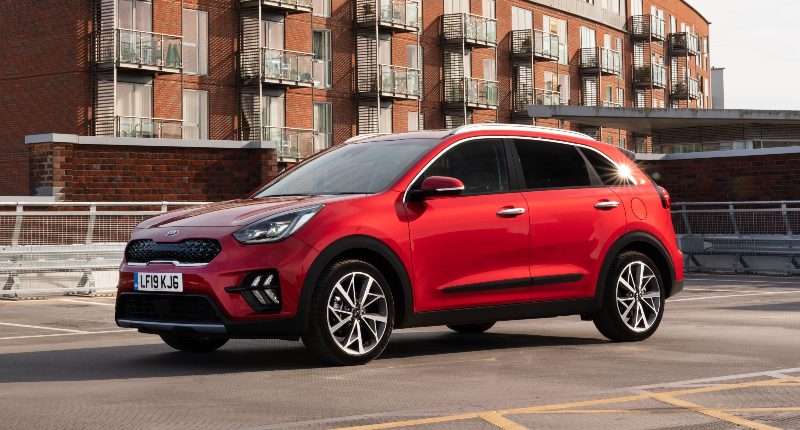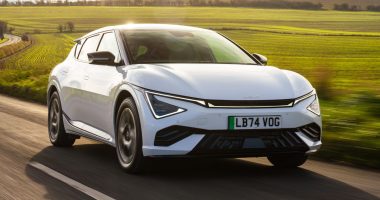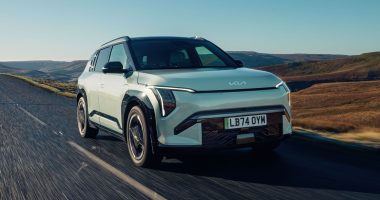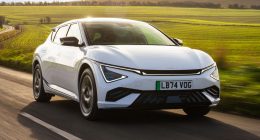Kia has never been afraid to up-date its product catalogue long before time requires it to. Take the Niro. The mid-sized crossover has been treated to a mid-life nip and tuck, with sharper looks, superior in-car technology and low running costs the order of the day. Should you buy one? We find out.
Table of Contents
A QUICK RECAP
Kia’s customer strategy is pretty much bang on. With the Niro, the first rung in the ladder is a mild hybrid (limited electric running), followed by a plug-in hybrid (36-mile electric range) and finally a fully electrified ‘e’ version that can take you north of 280-miles on a single charge. Tested here is the mild hybrid version of the family crossover. It deploys a hushed 1.6-litre petrol engine and an electric motor that jointly produce 139bhp for a leisurely 0-60 time of eleven seconds and a 101mph top speed. In short, this car prioritises mpg over mph. And because the substantive changes are found under the bodywork, the Niro’s aerodynamic, conformist shape remain largely untouched.
WHAT’S BEEN UPDATED?
Changes have been applied to the Niro’s skin – you just need to have a keen eye for detail. The DRL arrangement is new and comes framed in a reprofiled front bumper that loses the curves of before. There are also new alloy wheel profiles and the rear light clusters are a subtle – but welcome – improvement on the old car’s plainer design. Available in entry ‘2’ guise, mid-table ‘3’ and range-topping ‘4’, all three get a matt black radiator cover, roof rails, rear spoiler and privacy glass. OK, the tweaks are not extensive but they help to keep the new Niro current against class opposition – a key demand of Kia as it fights for hybrid sales that are tipped to hit 700,000 in Europe this year.
ANYTHING ELSE DIFFERENT?
It is inside where buyers are going to appreciate Kia’s efforts. Soft touch materials are more plentiful this time around. Metal trim, piano black accents and grey stitching on the doors, heated steering wheel and seat edges return. A few cheap plastics on harder-to-reach areas let the side down but that is the only criticism in a cabin awash with trick technology. We love how engineers have opted to install the 10.25-inch centre touchscreen so that it sits flush with the middle portion of the console. Quick to load, responsive to commands and simple to pair to smartphones are all plus points of the system but the biggest is a view of the road free of obstructions given its position.
IS IT ROOMY INSIDE?
Kia quotes generous space for five people as the Niro hybrid measures 1,805mm door to door. Even so, three adults sitting side-by-side in the back are probably not going to agree as shoulder rubbing is an inevitability, be it on short or long journeys. Headroom is incredibly generous and the same applies to legroom, knee and foot space. The latter is boosted by a floor that is more-or-less flat. Behind the rear bench is a decent-sized boot that has a series of small compartments to store odds and ends in safely. Those needing more space for trips to their DIY store, for instance, can free up an extra 989-litres by knocking the 60/40 split-folding back seats forward.
SO HOW DOES THE NIRO DRIVE?
The whole experience is pretty pleasing it must be said. On smaller wheels the cushioning effect would, unquestionably, be more effective, but if you decide to hustle it down a bendy back road you will find it handles neatly and predictably. On start-up there is a faint hum as the battery moves you along under gentle acceleration before the engine stirs into life. ‘Eco’ is the default setting and prioritises efficiency while ‘Sport’ injects some driving fun by maximising the engine/battery combination. As a rule of thumb, the battery supports the engine under load and when you lift off the accelerator, or apply the brakes, this energy is transferred to the 1.56kWh lithium-ion pack. Alternatively, the Niro’s three-stage self-braking function means you never have to prod the middle pedal; two paddles behind the steering wheel allow you to choose from one of three levels of regenerative braking. It takes time to adjust your driving style but once you have mastered it, it really does become second nature. Similar systems are deployed in Nissan’s Leaf and Mitsubishi’s Outlander.
PROS & CONS
+ Facelift enhances Niro’s appeal
+ Impressive infotainment and stereo
+ Classily presented from within
– Styling up-dates not easy to spot
– Larger wheels mean tetchy ride
– Some rivals offer better efficiency
DRIVER DISPLAY: The seven-inch TFT LCD panel is made up of three sections. The centre portion relays various items of vehicle information, including charge flow and what safety aids are live. For whatever reason, though, satellite navigation directions are not viewable on it unlike in many rivals’ cars. To the left of this you find information on the battery’s charge status and to the right fuel levels and speed.
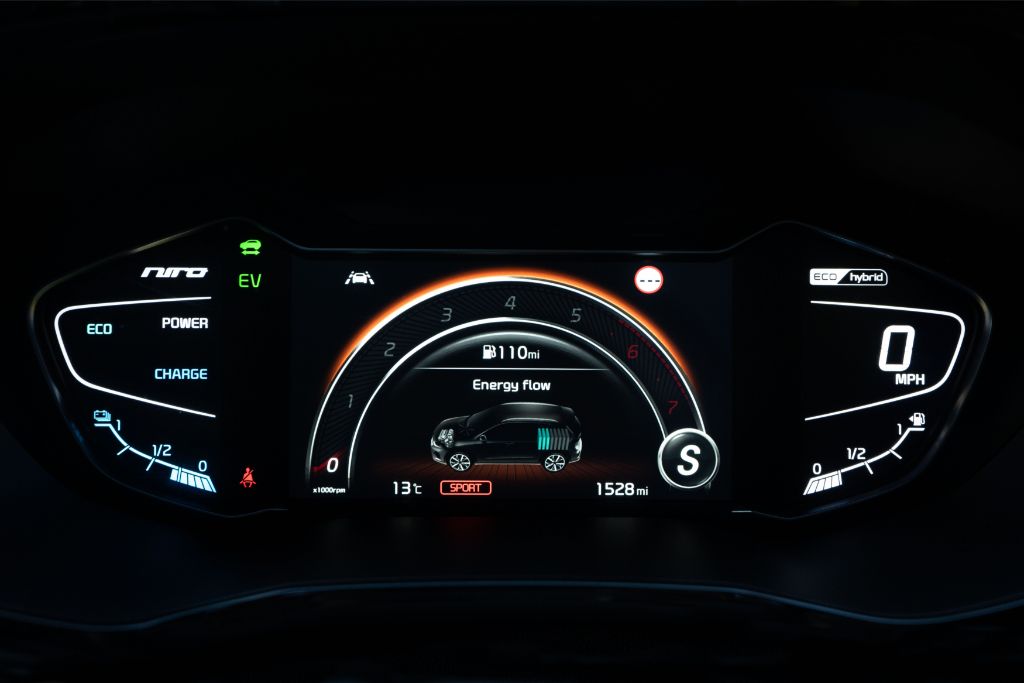
INTERIOR: The Niro really makes a statement on the inside as the slick 10.25-inch centre touchscreen and new seven-inch digital instrument cluster are on a par with premium cars from Audi and BMW. ‘4’-spec cars add heated – and ventilated – front seats and an 8-speaker audio system developed by JBL. Active safety aids include Blind Spot Detection, Rear Cross Traffic Alert and a Speed Limit Warning.
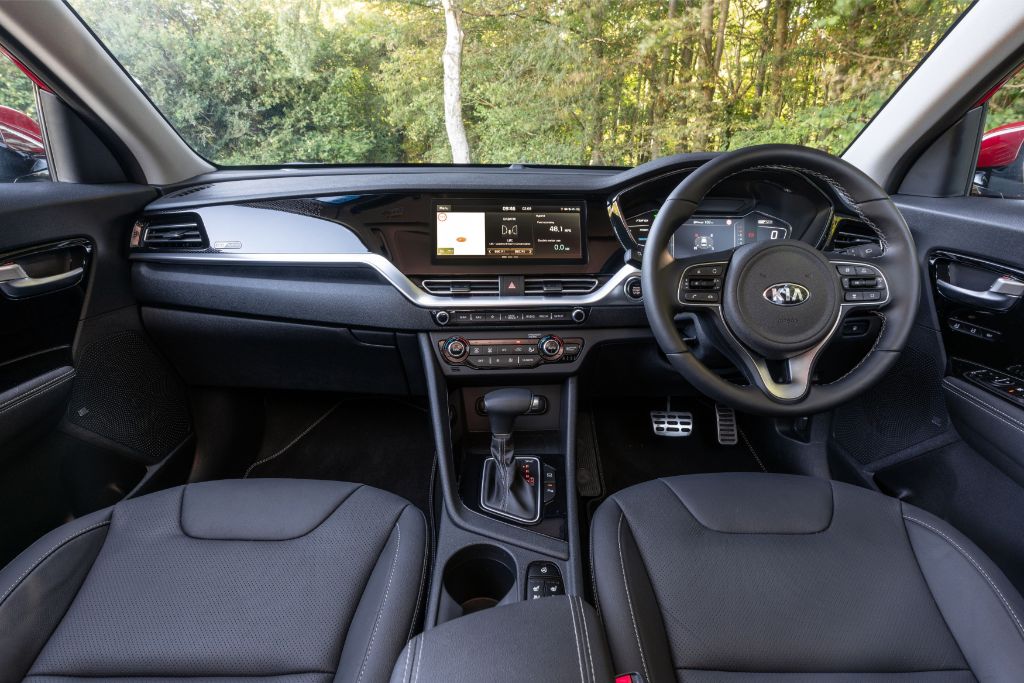
STYLING: Kia sells the Niro in three trim levels, with mid-range ‘3’ and top billing ‘4’ models sitting on 18-inch alloy wheels. The latter’s higher price tag also warrants more effective LED headlights. Up-dates over the previous model include arrow-inspired daytime running lights, a fresh arrangement for the tail-lights, and redesign for the bumpers. The rear end’s boxy, slab-sided profile is unchanged.
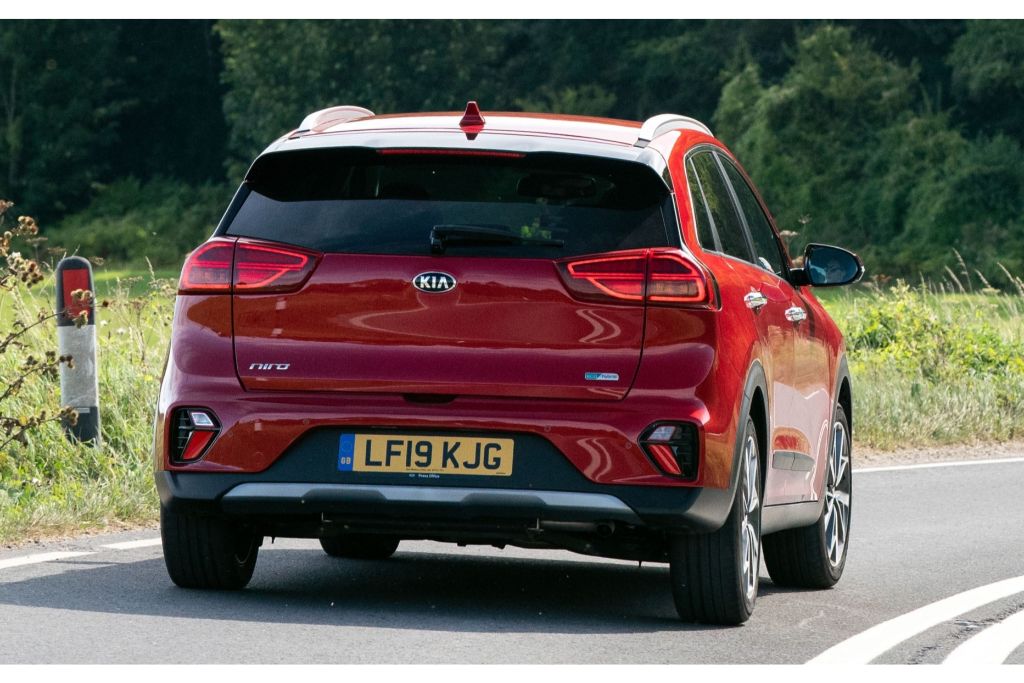
PRACTICALITY: At 2.7 metres long and 1.85 metres wide there is no shortage of space inside the Niro. Unlike some SUVs, the boot’s load area hasn’t been compromised as the 1.56kW battery is positioned under the rear bench. A low load-lips makes accessing the 382-litres simple and once the 60/40 rear seats are folded forward, a surface providing a hefty 1,371-litres of flat-decked capacity is created.
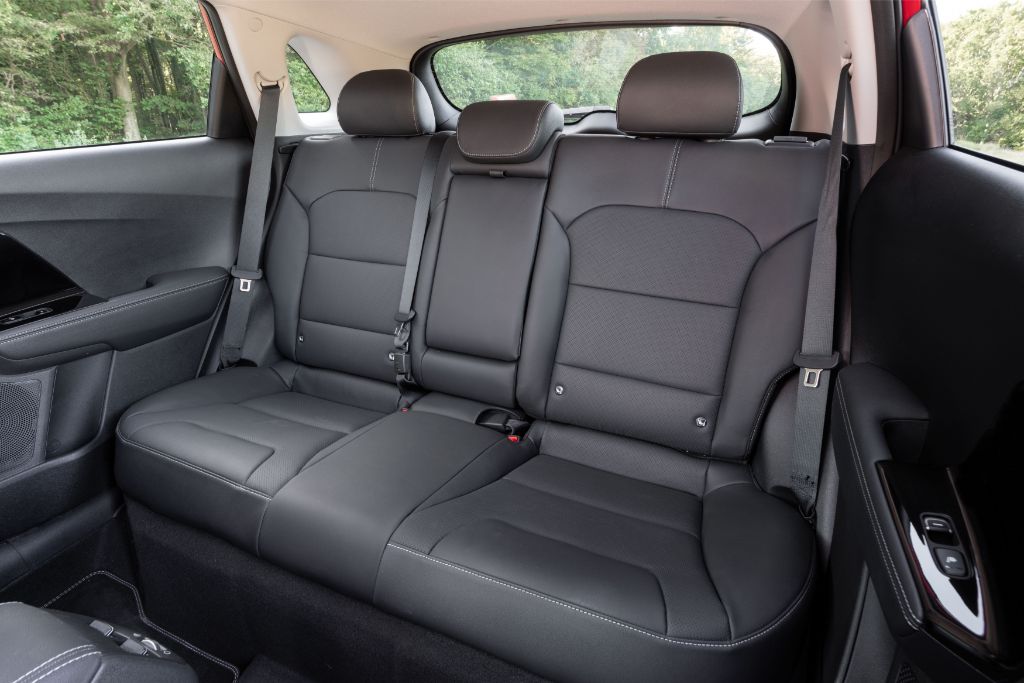
SPECIFICATION
Price: £29,600 (as tested)
Engine: 1.6-litre, 4cyl turbo petrol with 1.56kWh battery
Power/torque: 139bhp/195lb ft
Transmission: 6-speed automatic, front-wheel drive
0-62mph: 11.1 seconds
Top speed: 101mph
Economy/CO2: 54.3mpg/120g/Km
